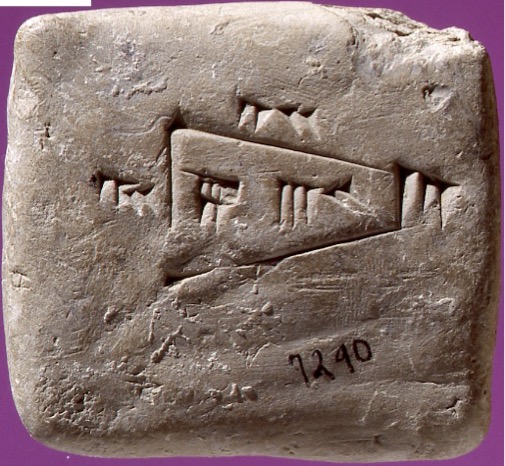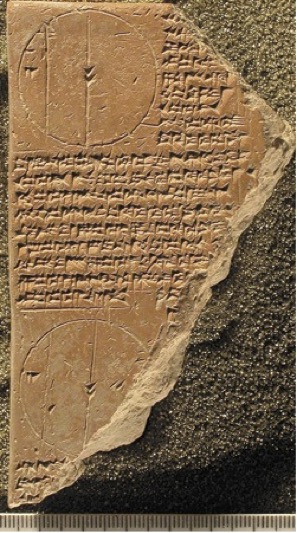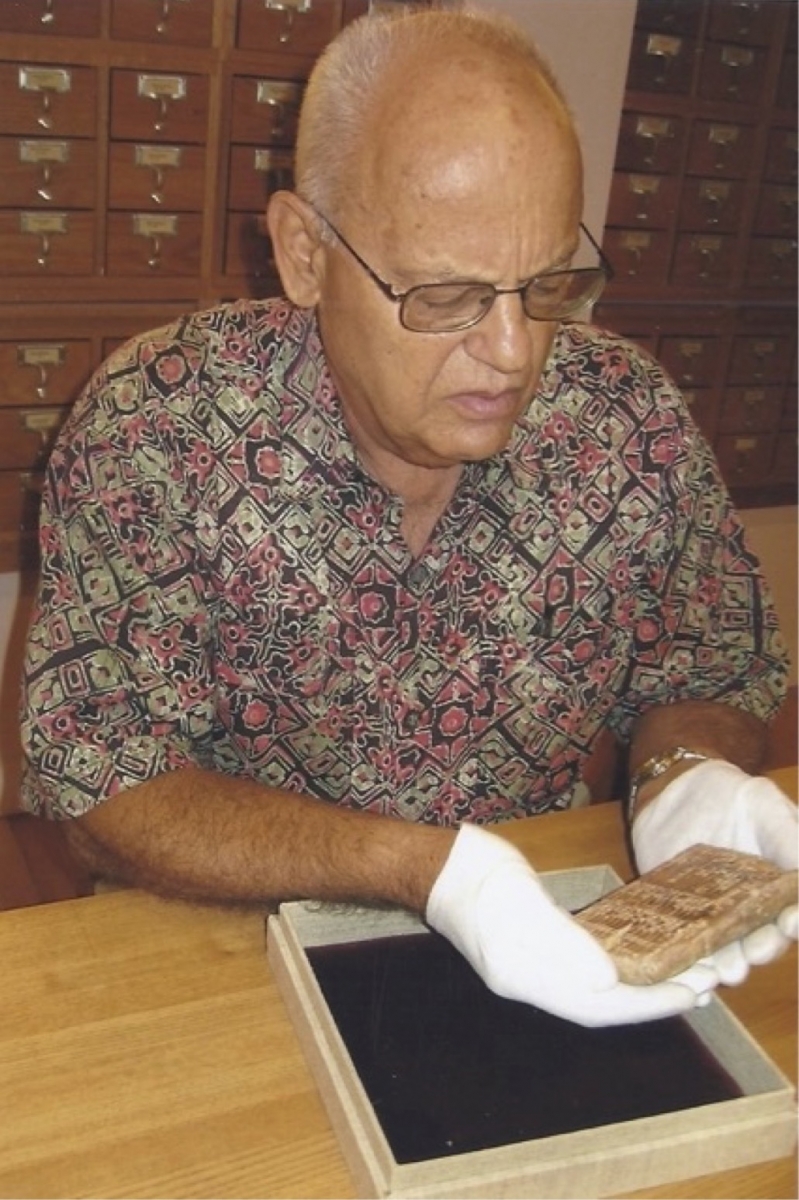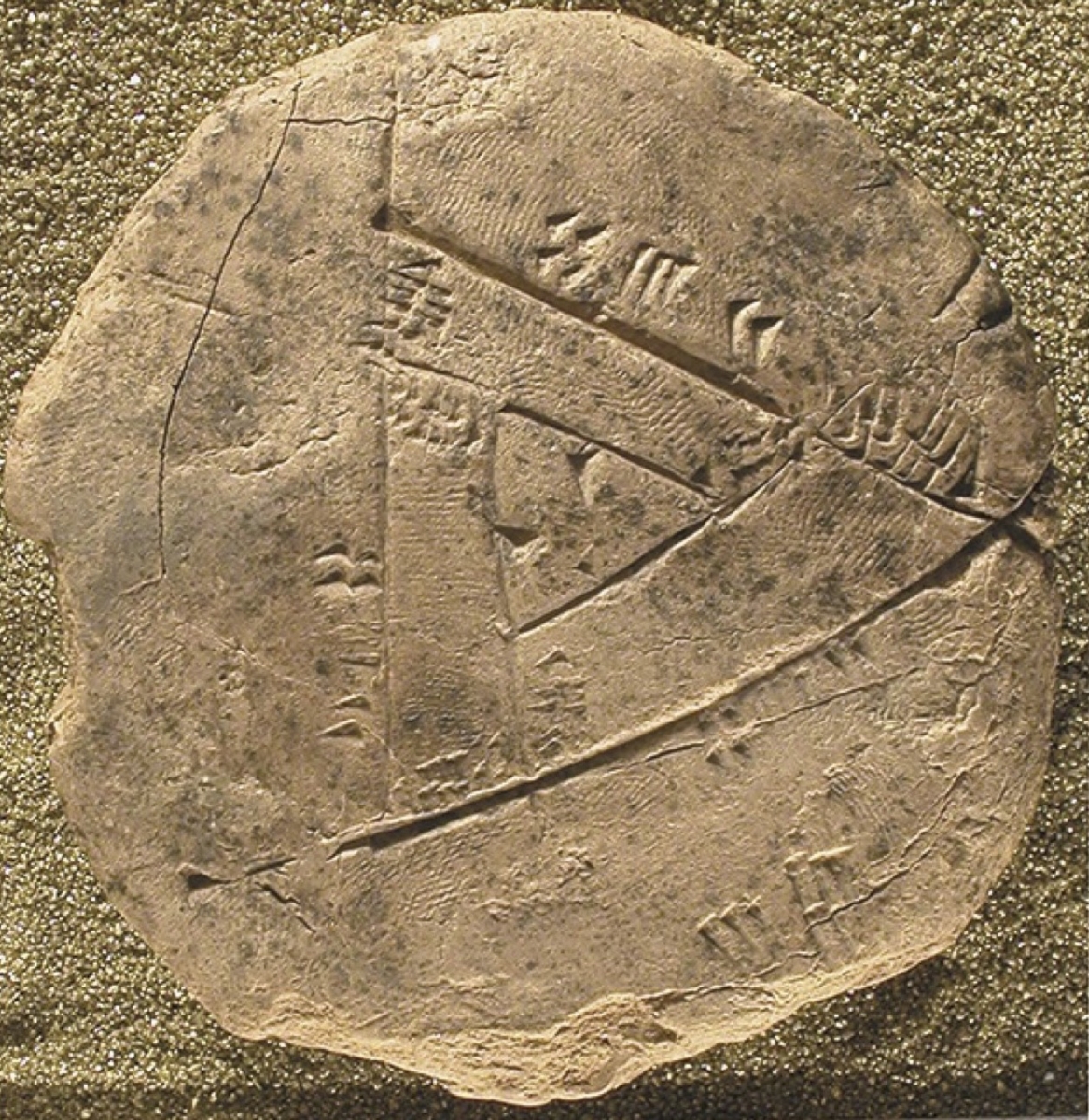- About MAA
- Membership
- MAA Publications
- Periodicals
- Blogs
- MAA Book Series
- MAA Press (an imprint of the AMS)
- MAA Notes
- MAA Reviews
- Mathematical Communication
- Information for Libraries
- Author Resources
- Advertise with MAA
- Meetings
- Competitions
- Programs
- Communities
- MAA Sections
- SIGMAA
- MAA Connect
- Students
- MAA Awards
- Awards Booklets
- Writing Awards
- Teaching Awards
- Service Awards
- Research Awards
- Lecture Awards
- Putnam Competition Individual and Team Winners
- D. E. Shaw Group AMC 8 Awards & Certificates
- Maryam Mirzakhani AMC 10 A Awards & Certificates
- Two Sigma AMC 10 B Awards & Certificates
- Jane Street AMC 12 A Awards & Certificates
- Akamai AMC 12 B Awards & Certificates
- High School Teachers
- News
You are here
Seeking Relevance? Try the History of Mathematics
Over the years, the journals of the National Council of Teachers of Mathematics (NCTM) have published numerous articles on the history of mathematics and its use in teaching. These journals have included Teaching Children Mathematics, Mathematics Teaching in the Middle School, and Mathematics Teacher, each of which was published through May 2019. In January 2020, these three journals were replaced by NCTM's new practitioner journal, Mathematics Teacher: Learning & Teaching PK–12 (MTLT). Thanks to the efforts of Convergence founding co-editor Frank Swetz, NCTM has allowed Convergence to republish (in pdf format) up to two articles from Mathematics Teacher annually since 2015.
The editors’ second pick for 2023—and final installment in this long-running series—is an article by Convergence founding co-editor Frank Swetz, in which he argued that history reveals to students that mathematics is a human activity, that such a recognition could allay mathematical anxiety, and that a natural integration of historical content into mathematics courses demonstrates to students that the discipline is both constantly evolving and contains concepts that echo across time and space:
Frank J. Swetz, “Seeking Relevance? Try the History of Mathematics,” Mathematics Teacher, Vol. 77, No. 1 (January 1984), pp. 54–62, 47. Reprinted with permission from Mathematics Teacher, © 1984 by the National Council of Teachers of Mathematics. All rights reserved.
(Click on the title to download a pdf file of the article, "Seeking Relevance? Try the History of Mathematics.")
Shortly before his death in June 2023 from an extended illness, in a piece he termed an “epilogue,” Professor Swetz reflected on developments in the use of history to teach mathematics over the past four decades and assessed the field’s future prospects:
I am pleased and honored that the editors of Convergence have decided to reprint “Seeking Relevance? Try the History of Mathematics” and to allow me to reflect in retrospect on the 40 years since it was written. This article garnered a periodical editorial award from the Association of Educational Publishers and was well received by the reading audience. My purpose in writing this piece was to provoke thinking on the use of historical background in the teaching of classroom mathematics and to supply supporting information by offering a variety of teaching strategies to accomplish this feat. To focus on the main thrust of the title: yes, “relevance” still has its impact. Relevance implies understanding, importance, and appreciation—features that should always permeate mathematics teaching. We, as mathematics teachers, constantly encounter the students’ complaint, “What is this stuff good for?” Such a question is appropriate from any curious being. We all attempt to understand our world by questioning the Who? What? and Why? This is a search for relevance. Mathematics should have such a relevance.
1983–2023
Education has certainly changed over time since the first appearance of my article, as have teaching conditions and student populations. Sociological, political, and economic pressures have varied, but mathematics remains the same. Unfortunately, pedagogical and intellectual/psychological obstacles to mathematics learning still exist. Nonetheless, in the duration of time since the “Seeking Relevance” article first appeared, our understanding of the history of mathematics has also changed. Today, the value of history in the understanding of mathematics is better recognized and more firmly established. Continuing research has clarified and sharpened our understanding of mathematics’ place in the realm of human progress.
The continued pursuit of relevance over the past four decades has resulted in a spate of publications clarifying various aspects of mathematical history. In particular, a variety of books and articles have enhanced the relevance of their topics and subjects. Several comprehensive history of mathematics texts, updated in their contents, have refreshed our perspectives. Notable among these efforts is Victor Katz’s university text: A History of Mathematics (1993; 4th ed. forthcoming), a primary text for university instruction on the subject. Specific topics within the history of mathematics have also been refined through additional research. On page 57 of my article, a cursory mention is made of the Chinese origins of magic square of order 3, the Luoshu. This topic and its implications fascinated me and prompted me to seek out further information on this concept and its origins, leading to my 2002 book, The Legacy of the Luoshu (2002). The reception of my suggestions for the use of historical mathematics problems and exercises in classroom teaching resulted in the publication of Mathematical Expeditions (2012). This book, compiled specifically for teachers, contains a cornucopia of over 500 mathematical problems from various periods of history and spanning many cultures. These problems—instances of cause and effect, the needs of society, and the attempts to apply mathematics to satisfy those needs—clearly illustrate the relevance of mathematics to human development. Additionally, the original article led to an expanded version designed as a manual/workbook for using the history of mathematics in its teaching, Learning Activities from the History of Mathematics (Weston Welsh, 1994).
Governmental and Organizational Support
At a wider level of influence, relevance for historical approaches to mathematics teaching and learning has been promoted by the federal government’s National Science Foundation (NSF), which in 1991 urged a learning and teaching emphasis based on enrichment in STEM (Science, Technology, Engineering, Mathematics). As a result of this movement, the Mathematical Association of America’s Committee on the Mathematical Education of Teachers revised their standards. The report, A Call for Change: Recommendations for the Mathematical Preparation of Teachers of Mathematics, urged mathematics education programs to provide experiences during which pre-service teachers:
develop an appreciation of the contributions made by various cultures to the growth and development of mathematical ideas; investigate the contributions made by individuals, both female and male, and from a variety of cultures, in the development of ancient, modern and current mathematical topics; [and] gain an understanding of the historical development of major school mathematics concepts (p. 9).
NSF has also promoted and supported several projects for the direct enrichment of teachers focusing on the history of mathematics. I would like to say that, outstanding among these efforts, is the founding of the MAA’s e-journal Convergence (2004). This resource on the history of mathematics and its use in teaching, now the vehicle for this article, has met with great success and today remains as a free, readily-available resource. My involvement with this specific project should perhaps disqualify me from promoting it; however, I believe its value and worth transcend this convention. In a similar manner, with government support, specific projects such as TRIUMPHS: Transforming instruction in Undergraduate Mathematics via Primary Historical Sources (2015) have been carried out to demonstrate how the history of mathematics and classroom teaching support each other.
Continued Efforts
On a more personal note, my own appreciation of the history of mathematics has continued to grow and be strengthened. In one of its examples, the “Relevance” article (page 57) discussed a cuneiform tablet from the Old Babylonian era (OB). I was intrigued to realize that, while the content on some of these tablets discussed mathematics, they also illustrated the mathematical pedagogy employed by the ancient scribes. (For example, see Figure 1.) This realization has motivated me to appreciate the evidence of such tablets in a different light. I have been fortunate enough to be able to inspect Plimpton 322, which is housed in Columbia University (Figure 2). This encounter allowed me to better understand the recent controversies surrounding this tablet’s inscription.


Figure 1. Cuneiform tablets showing a problem involving a trapezoid (left) and the properties of a circle (right). Mathematical Treasures: Old Babylonian Area Calculation and Babylonian Scribal Exercises.

Figure 2. The author examines the Plimpton 322 cuneiform tablet
at Columbia University Library. Mathematical Treasures.
With some of these tablets, a Babylonian scribe’s pedagogical methodologies are obvious. For example, one Old Babylonian instructional clay tablet required the student scribe to find the area bound between an equilateral triangle inscribed in a larger equilateral triangle (Figure 3). The side lengths of both triangles were provided. In his solution, the student considered the sought-after area to be composed of a chain of three congruent trapezoids. He found the area of one trapezoid and computed the desired area. How would you do this problem? There are hundreds of such problems within the capacity of modern high school students, and the ancient allure adds intrigue and motivation.

Figure 3. An ancient Babylonian scribal student was required to find
the area enclosed within two triangles. Mathematical Treasures.
Conclusion
The history of mathematics still provides a relevance that adds to our understanding of mathematics. This review and retrospective have taken us across a substantial span of time, almost a half-century. During this duration, our view and knowledge of the history of mathematics has also changed. Now, the shadow of prejudicial ignorance has been lessened; the contributions of other cultures are now better appreciated, as are the mathematical abilities of women. For example, today we recognize and appreciate the computational skills of ancient Chinese scribes who employed their number rods and algorithmic computing schemes to achieve highly accurate results; similarly, the mathematical abilities of women have been highlighted by the achievements of such individuals as Florence Nightingale, who pioneered the use of statistics. In a similar vein, her Victorian sisters demonstrated their problem-solving abilities by undertaking the mathematical puzzles published in the British journal The Ladies Diary. Prior to such accomplishments, such mathematical takings were believed to cause the feminine gender “fever of the brain.” Wrong! Expansions in the scope and understanding of the history of mathematics only increase the field’s relevance in the teaching of mathematics.
About NCTM
The National Council of Teachers of Mathematics (NCTM) is the public voice of mathematics education, supporting teachers to ensure equitable mathematics learning of the highest quality for all students through vision, leadership, professional development, and research. In addition to its practitioner journal Mathematics Teacher: Learning & Teaching PK–12 (MTLT), the council currently publishes a mathematics education research journal, as well as an online journal for teacher educators (jointly with the Association of Mathematics Teacher Educators). With 80,000 members and more than 200 Affiliates, NCTM is the world’s largest organization dedicated to improving mathematics education in prekindergarten through grade 12. For more information on NCTM membership, visit http://www.nctm.org/membership.
Other Mathematics Teacher Articles in Convergence
Patricia R. Allaire and Robert E. Bradley, “Geometric Approaches to Quadratic Equations from Other Times and Places,” Mathematics Teacher, Vol. 94, No. 4 (April 2001), pp. 308–313, 319.
David M. Bressoud, "Historical Reflections on Teaching Trigonometry," Mathematics Teacher, Vol. 104, No. 2 (September 2010), pp. 106–112, plus three supplementary sections, "Hipparchus," "Euclid," and "Ptolemy."
Richard M. Davitt, “The Evolutionary Character of Mathematics,” Mathematics Teacher, Vol. 93, No. 8 (November 2000), pp. 692–694.
Keith Devlin, "The Pascal-Fermat Correspondence: How Mathematics Is Really Done," Mathematics Teacher, Vol. 103, No. 8 (April 2010), pp. 578–582.
Jennifer Horn, Amy Zamierowski, and Rita Barger, “Correspondence from Mathematicians," Mathematics Teacher, Vol. 93, No. 8 (November 2000), pp. 688–691.
Po-Hung Liu, “Do Teachers Need to Incorporate the History of Mathematics in Their Teaching?,” Mathematics Teacher, Vol. 96, No. 6 (September 2003), pp. 416–421.
Seán P. Madden, Jocelyne M. Comstock, and James P. Downing, “Poles, Parking Lots, & Mount Piton: Classroom Activities that Combine Astronomy, History, and Mathematics,” Mathematics Teacher, Vol. 100, No. 2 (September 2006), pp. 94–99.
Peter N. Oliver, “Pierre Varignon and the Parallelogram Theorem,” Mathematics Teacher, Vol. 94, No. 4 (April 2001), pp. 316–319.
Peter N. Oliver, “Consequences of the Varignon Parallelogram Theorem,” Mathematics Teacher, Vol. 94, No. 5 (May 2001), pp. 406–408.
Robert Reys and Barbara Reys, “The High School Mathematics Curriculum—What Can We Learn from History?”, Mathematics Teacher, Vol. 105, No. 1 (August 2011), pp. 9–11.
Rheta N. Rubenstein and Randy K. Schwartz, “Word Histories: Melding Mathematics and Meanings,” Mathematics Teacher, Vol. 93, No. 8 (November 2000), pp. 664–669.
Shai Simonson, “The Mathematics of Levi ben Gershon,” Mathematics Teacher, Vol. 93, No. 8 (November 2000), pp. 659–663.
Frank Swetz, “The ‘Piling Up of Squares’ in Ancient China,” Mathematics Teacher, Vol. 73, No. 1 (January 1977), pp. 72–79.
Patricia S. Wilson and Jennifer B. Chauvot, “Who? How? What? A Strategy for Using History to Teach Mathematics,” Mathematics Teacher, Vol. 93, No. 8 (November 2000), pp. 642–645.
Frank J. Swetz (The Pennsylvania State University), "Seeking Relevance? Try the History of Mathematics," Convergence (August 2023), DOI:10/4169/20230821




